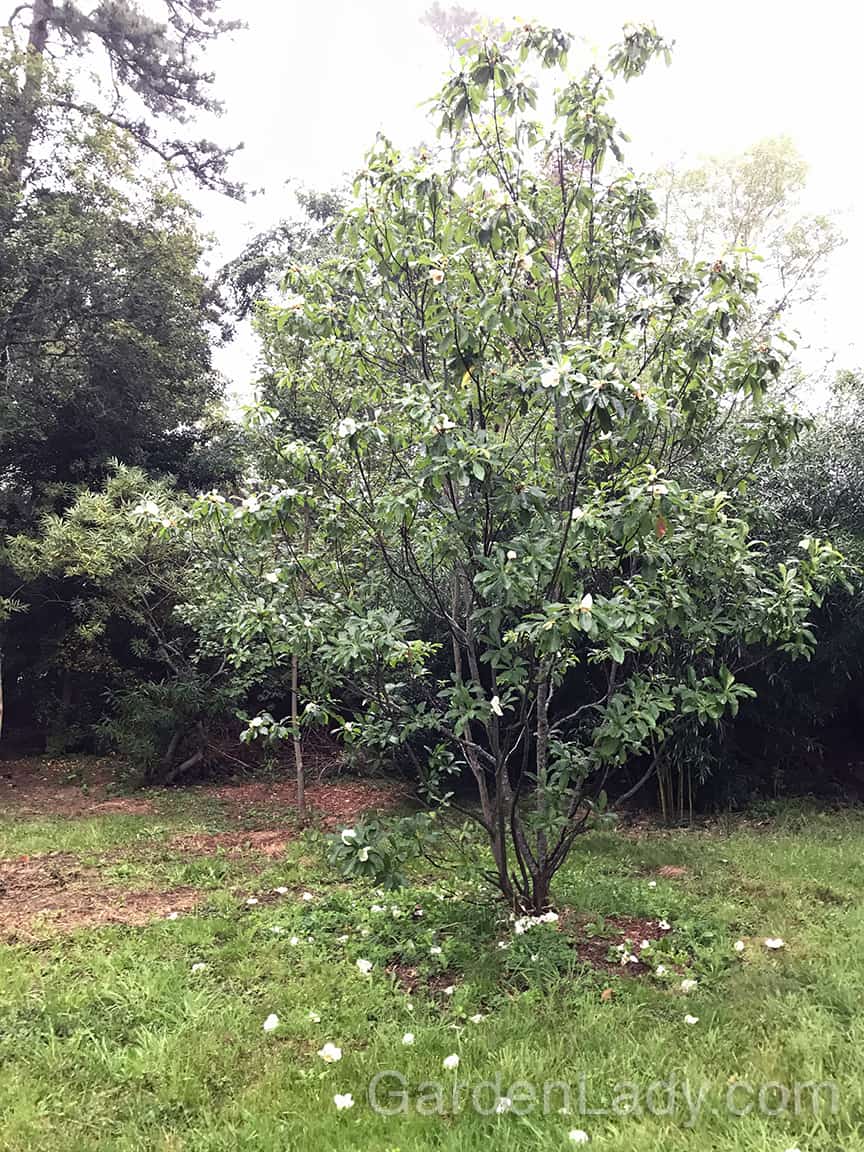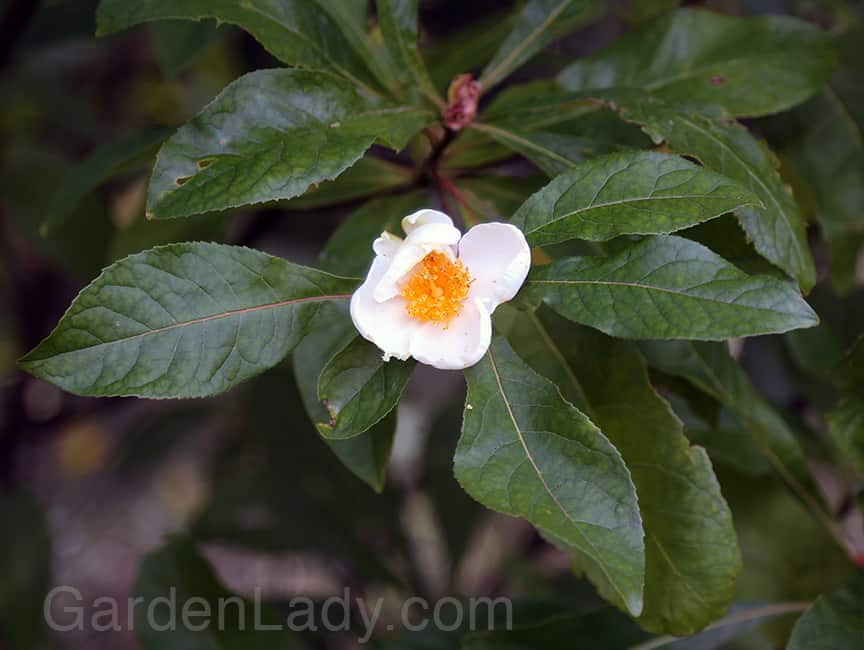When we were listing the Plantrama podcast on iTunes, I was surprised to see that there was no category such as “Home and Garden.” In fact, there was no good category for plants at all. Pretty shocking, considering that our very life depends on those that photosynthesize.
This began my quest to find out why plants aren’t part of popular culture, and to that end, I’ve decided to go right to the source: the plants themselves. Here is the first in my series of Plants and Pop Culture: The Interviews.
CL: Today I’m interviewing Franklinia alatamaha, a multi-stemmed, small tree that grows near my fragrance garden. Let me start by asking about your name. What do you prefer to be called, Franklinia or alatamaha?
Fa: Well, since there aren’t any other species in my genus, you should just call me Franklinia. But please, don’t shorten it to Frank. Some try and use that nickname to make it seem like we’re closer than we really are, but I don’t care for it.
CL: OK, Franklinia it is. Tell me, Franklinia, why aren’t plants a larger part of our popular culture?
Fa: Oh there are several reasons for that. One, of course, is the competition we face. Take your spring flowering trees, for example. Your cherries, pears or apples. They put on a huge colorful show just as the weather is getting warmer. But this is the time when the people are all shedding layers of clothing. They’re going from winter coats to tank tops and skimpy running shorts! So just what do you suppose people are looking at? All those newly exposed bodies, of course. How is a flowering tree supposed to compete with that?
CL: OK, but that’s just one season and one idea about why plants are ignored. There are many plants that are supremely useful for people…
Fa: That’s part of the problem! Look at the poor oaks. When people notice them, all they can see is firewood, flooring or veneer for a desk. And when the trees are reproducing, do people value the potential in those cute little acorns? Of course not. They hate them for acting like ball bearings and turning their driveways into slip-and-slides. The oak swings back and forth from something to be consumed to a plant that’s cursed.
CL: I see your point. Let’s talk a bit more personally, however. What is the problem from a Franklinia’s point of view?
Fa: We don’t think of it as talking personally, of course…we’d say treeally. And from my perspective it’s impossible to understand why Franklinia alatamaha isn’t better known. I’ve been expecting a call from Ken Burns for years.
CL: Ken Burns?
Fa: Of course! I have the perfect Ken Burns story. I’ve got the late 1700s and a father and son team of plant hunters, John and William Bartram. Then there’s John’s good friend Benjamin Franklin, who I was named after, and the Alatamaha river. It’s story filled with history and nature, with loads of great visuals.
CL: True enough…
Fa: Even if Ken isn’t interested, there’s a tale here suitable for Unsolved Mysteries. After William Bartram collected samples from the trees along the Alatamaha river, the plant has never been seen in the wild since. I’m surprised that there aren’t whole groups of conspiracy buffs making up tales about aliens spiriting my ancestors off in spacecraft. Not quite as highbrow as an PBS documentary, but you did ask about popular culture, and there’s nothing more pop culture than aliens and conspiracies.
CL: Frankly, I see your point.
Fa: Watch the Frank puns, garden lady.
CL: Sorry.
Fa: Beyond all the script possibilities, I myself am very photogenic. I’ve got large white flowers filled with bright yellow stamens that appear in the fall. Then there’s my foliage that’s glossy green in the summer and turns a range of yellows and reds in the fall. And how many trees do you know that have flower and fall foliage color at the same time? We’re talking unique drama here. It’s absolutely mystifying why most of America doesn’t know my name, let alone plant a Franklinia in their yards and gardens.
CL: Agreed. Anything else you’d like to say?
Fa: Well, if anyone reading this knows someone at Florentine Films, be sure to put in a word for me, OK? Any being with a root system knows that much of life is about having the right connections…

Some call this a multi-stemmed, small tree, and others say it’s a very large shrub.

My plant flowers for several weeks, and as one flower opens others drop whole to the ground.

Not many trees have flowers and fall foliage color all at the same time.
For those who have a hard time telling fact from fiction, and lest I be accused of cranking out fake news, be assured that this conversation was of my invention. Should Franklinia alatamaha begin speaking in language that people understand, I’m sure they will be far more articulate than I’ve written here.

Hey Frank, Do you have a cousin named Stew? (Ardia)
Very clever and fun, C.L.!
This is a slow growing tree, perfect for small gardens. It is somewhat rare and supposedly extinct in the wild., only found now in specialty nurseries. The tree leaves turn a nice red/orange in early autumn with white flowers around the same time.
Definitely worth seeking.